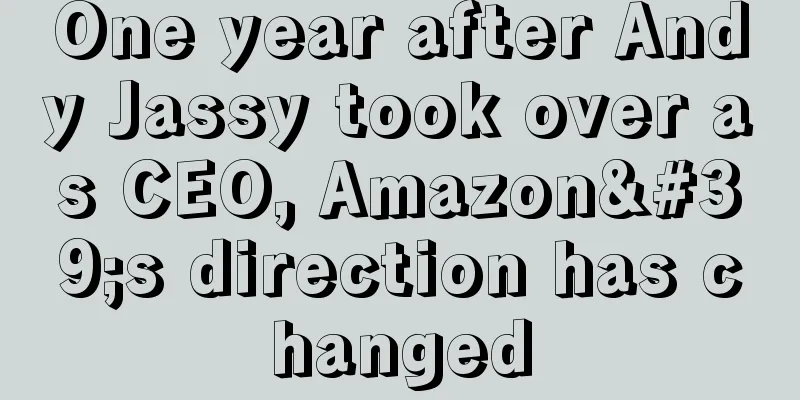|
On July 5, 2021, Amazon founder Bezos officially stepped down as the company's chief executive officer (CEO), announcing the end of his Amazon era. This technology and e-commerce giant also ushered in its first change of leadership 27 years after its founding. Its successor is Andy Jassy, who was previously in charge of cloud computing business. He is 54 years old and a member of Bezos' elite executive team "S Team". In the past few years, under the leadership of Bezos, Amazon has become the fastest growing and largest technology company in the world; and the new CEO is also a well-known figure. AWS, which he is in charge of, contributes more than half of Amazon's profits and has become one of Amazon's most profitable departments. Why does Bezos love Andy and choose him as the next head of Amazon? It has been one year since Andy took office. What has his succession brought to Amazon? What changes have Amazon sellers experienced under the leadership of the new CEO? Amazon's second-generation CEO takes office in a time of crisis Q2 of 2021 just ended, and Amazon completed a major transformation of the company's management. However, this historic handover did not have as much halo as imagined. Since Bezos' "retirement" came at a turbulent period for Amazon, there were even negative news in the industry that "Andy took over his brother-in-law's mess." In fact, such remarks are not groundless. Under Bezos' leadership, Amazon has been "making great strides and expanding its territory", rapidly expanding its e-commerce business around the world and becoming the unrivaled global e-commerce leader. However, such a radical strategy also made Amazon suffer. Under the influence of external environment and internal factors, the company's growth slowed down and a series of "development crises" occurred. It was in this context that Andy took over Amazon. Some media called it "taking the lead at a time of defeat and receiving orders in the midst of danger." Take Bezos' performance before his "retirement" as an example. In the second quarter of 2021, Amazon's revenue was US$113.1 billion, a year-on-year increase of 27%; net profit was 7.778 billion, a year-on-year increase of 24%; data showed that Amazon's revenue growth rate dropped sharply, lower than market expectations, and because its main profits come from cloud services, its operating profit margin also has a downward trend. In the past two years, the epidemic has driven the prosperity of online shopping. Bezos led Amazon to carry out large-scale expansion, repairing warehouses, recruiting new employees, etc. However, after the epidemic eased, consumers returned to offline stores, and the sequelae caused by blind expansion began to emerge. Overly aggressive expansion plans have led to Amazon's overcapacity, sharp cost increases, warehouse and employee expense overruns, ongoing worker safety issues, rising costs, and losses for unions. Andy said in an interview with CNBC that the costs caused by inflation, the epidemic and the Russian-Ukrainian war are too high for the company to bear, and we are doing everything we can to reduce these costs. " In addition, Amazon is also facing a huge threat, that is, antitrust supervision in Europe and the United States. In the past two years, Amazon has been subject to antitrust investigations and fines in different countries several times, which has become one of the biggest obstacles to the company's operations. It was in this context of "internal and external troubles" that Andy took over the baton of Amazon from Bezos. The position of CEO was full of challenges. Time has passed. It has been a year since Andy took office, but the above difficulties have not been resolved. Amazon has even ushered in the most challenging moment in its history. The situation is grim: Enterprise problems are coming one after another According to reports, many e-commerce companies and retailers are currently facing a series of economic headwinds, including rising fulfillment costs, continued supply chain bottlenecks, and inflation that limits consumer purchasing power. Foreign media expects retail e-commerce growth to slow to 9.4% this year, down from 17.8% last year. In the year that Andy took over Amazon, Amazon seemed to have pressed the pause button on its rapid growth and no longer blindly pursued growth and expansion. However, even though the new management team worked hard to eliminate the previous negative impact, it was unable to prevent the following situation from deteriorating. 1. Stock price plummeted and performance declined Since Andy became CEO, Amazon's stock value has plummeted by more than 40%, and its market value has evaporated by more than $600 billion. This means that during Andy's tenure, shareholders have lost more than $770 billion in value. In terms of performance, Amazon's revenue in the first quarter of this year increased by 7% year-on-year, far lower than the 44% increase in the same period of 2021, marking the slowest growth rate in 20 years. Revenue from Amazon's core online business, which includes its own-brand stores, actually fell 3%, and revenue growth from its subscription business, including Prime Video, also slowed, the company said. In addition, according to Insider, although Amazon will occupy a large share of the US e-commerce market, its share this year will drop to 37.8% from 38% in 2021. 2. Senior management resignation and team turmoil It is learned that Amazon's leadership changes have been very frequent in the year since Andy took over Amazon. At least 50 senior executives left Amazon in 2021. Some of the reasons for their resignation were dissatisfaction with low salaries and constant olive branches thrown by other high-paying companies. In 2022, a storm of resignations is sweeping across Amazon, with many personnel changes occurring at a time of major changes in Amazon's retail division. Recently, it was reported that Dave Clark, CEO of Amazon's global consumer business, will resign on July 1. Business Insider reported that Clark's departure was due to the union movement in the warehouse and Andy's dissatisfaction with retail profitability and Clark's "ruthless" management style. In addition, Dave Clark, who is responsible for Amazon's operations (including its entire logistics and transportation network), Alicia Boler-Davis, vice president of global distribution of Amazon's logistics network, David Bozeman, vice president of Amazon's transportation business, and Charlie Bell, senior vice president of Amazon AWS, have also left one after another. 3. Rising costs and business saturation As 2021 draws to a close, Amazon faces higher costs due to supply chain and labor shortages, the Russia-Ukraine conflict, and inflationary pressures. Amazon's strategy of expanding production during the epidemic also backfired. The expansion of warehouse capacity and employee headcount led to the company's severe overcapacity and declining productivity. It is reported that Amazon's costs increased by $6 billion in the first quarter and are expected to increase by $4 billion in the second quarter. At the same time, after the rapid expansion in the previous year, many of Amazon's businesses have become saturated and stagnant. Some media reported that Amazon is currently a typical case of over-growth, and its future depends on whether Andy is willing to reduce Amazon to its core business. What is Andy's attitude in the face of so many difficulties? Turning the Tide: Amazon's Profound Change According to Bloomberg, in his first year in charge of the entire company, Andy already had a deep understanding of all elements of Amazon's business. And this is indeed the case. One year after Andy took office, Amazon is undergoing profound changes. It is learned that after realizing the company's crisis, Andy began to make strategic adjustments to make up for the losses caused by previous aggressive expansion. 1. Split the stocks and increase salaries In March this year, Amazon announced that it would split its common stock at a ratio of 1 to 20 and repurchase up to $10 billion of the company's common stock. This move can attract more retail investors and give Amazon employees more flexibility in managing their equity. Amazon is also increasing overall employee compensation worldwide to attract and retain top talent, with the company reportedly more than doubling its top base salary in the U.S. from $160,000 to $350,000 per year. 2. Closing physical store operations To ease production costs and operational pressures, Amazon closed a number of businesses and physical stores this year. In March, Amazon closed some of its physical stores — including 68 bookstores, Amazon 4-star stores and pop-up stores — and shut down six underperforming superstores in its Whole Foods division. On June 2, Kindle China officially announced: Amazon will stop operating the Kindle e-book store in China on June 30, 2023. 3. Sublease warehouses to handle excess warehouse capacity After Amazon doubled its logistics capabilities and warehouse space, physical stores became popular again and the vacancy rate of Amazon's warehouse space increased significantly. This year, Amazon stopped building warehouses larger than 9 million square meters and is renting out some of its warehouses (at least 10 million square feet) to increase the company's profits. 4. Stop recruiting more employees It is reported that Andy has canceled several expansion plans that Bezos had planned while he was in office. At the same time, in April this year, Amazon suspended plans to add more than 1,500 jobs in its retail business. 5. Reduce production costs In early 2022, Amazon imposed a 5% surcharge on U.S. sellers who used its warehousing, packaging and delivery services. In April, Amazon introduced a 5% fee on third-party sellers in the U.S. that use its shipping and storage services to offset some of the costs. Amazon also raised subscription fees for Prime members, raising the monthly subscription fee from $12.99 to $14.99 and the annual subscription fee from $119 to $139. As Andy made a series of changes, the situation of third-party sellers on Amazon was also somewhat awkward. A sneeze on the platform could cause sellers to catch a cold. In the year since Andy took office, sellers did not seem to have a good life: strict platform supervision, rising advertising fees, difficulty in obtaining natural traffic, and rising promotion costs all seemed to point to the transformation of the giant. Positive change: The direction of the giants has changed
In terms of time, the day Andy took office happened to be the time when a large-scale account blocking wave broke out. After that, many sellers on the platform seemed to have gone downhill. Not only did the big sellers suffer setbacks, but the small sellers also complained a lot. Compared with Bezos, the leader that sellers were familiar with before, the new CEO did not seem to have many flaws and did not receive much attention. Unlike the large number of jokes and emoticons about Bezos that were popular in the circle before, things about Andy rarely appeared in the seller group. But it is this low-key second-generation leader who holds the "life and death" of the platform's sellers. Under Andy's leadership, Amazon's direction is slowly changing, resulting in many subtle changes. What substantive impact have these changes had on the sellers? It is learned that the first change that sellers feel is the continuous strengthening of the platform's supervision. Although the account suspension wave began in April last year, since then, Amazon's strict supervision has become more and more intense. Illegal behaviors such as non-compliant reviews, off-site promotion, account review, and order defects will be severely punished by the platform, and many sellers' listings have been banned. There are also voices in the industry saying that Amazon needs the approval of senior executives before banning the accounts of big sellers, so Andy must be aware of the incident. Secondly, sellers have also deeply felt the changes in the platform's traffic mechanism. Some sellers said that since Andy took over, Amazon's search mechanism has quietly changed, such as Amazon has increased the proportion of paid advertising to make more profits; it is more difficult to distinguish between paid traffic and natural traffic; and there is an increase in sponsored display content at the top of natural search results. These changes have invisibly increased sellers’ advertising and promotion costs. The clicks that could once be obtained with a small amount of advertising fees now require a higher price. Finally, the most criticized thing this year is Amazon's practice of shifting costs, such as the several increases in FBA fees. This move has dealt a heavy blow to sellers against the backdrop of global supply chain disruptions and rising freight rates, forcing many sellers to raise product prices in response. In fact, the relationship between the platform and the sellers is not incompatible. Andy must be well aware of how much revenue third-party sellers have contributed to Amazon, but the adjustment of the platform often affects the entire body, and sellers are in it and cannot be completely unaffected. As a grassroots seller, you must not only follow the market trend, but also make corresponding adjustments based on the platform's reforms. Going with the trend and abiding by the rules are the immutable rules of the future. Amazon must also understand the truth that "water can carry a boat, but it can also capsize it" and "he who wins the hearts of the people wins the world."
|










